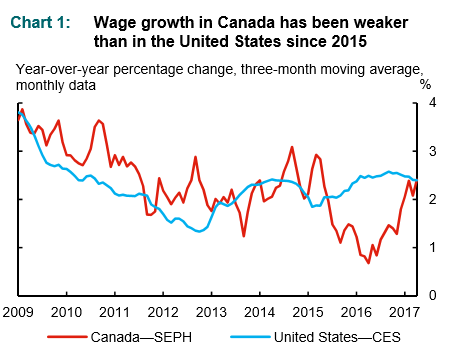At the heart of setting monetary policy is the debate as to why wage growth has been so slow. Central bankers have been struggling with hitting their inflation targets. They constantly point to their disappointment that wages continue to stagnate, despite significant improvements in the unemployment rates. Without a steady upward movement in wages, it is very unlikely that these inflation targets will be met, frustrating bankers who are itching to raise short-term rates. Yet, month after month, labor force data deny the policy makers justification for raising rates.
Recent research by the Bank of Canada offers some interesting insights into the factors behind the weakness in wage growth [1].To begin with, wage growth in Canada has been relatively more subdued since 2014 when oil prices collapsed. While it has picked up somewhat since it continues to remain below historical averages. U.S. wage growth has performed relatively better, although it continues to remain weak in spite of an unemployment rate near or at full employment. This has been a continuous headache for the Fed in setting its rate policy.

The major findings of the study are summarized below:











Leave A Comment